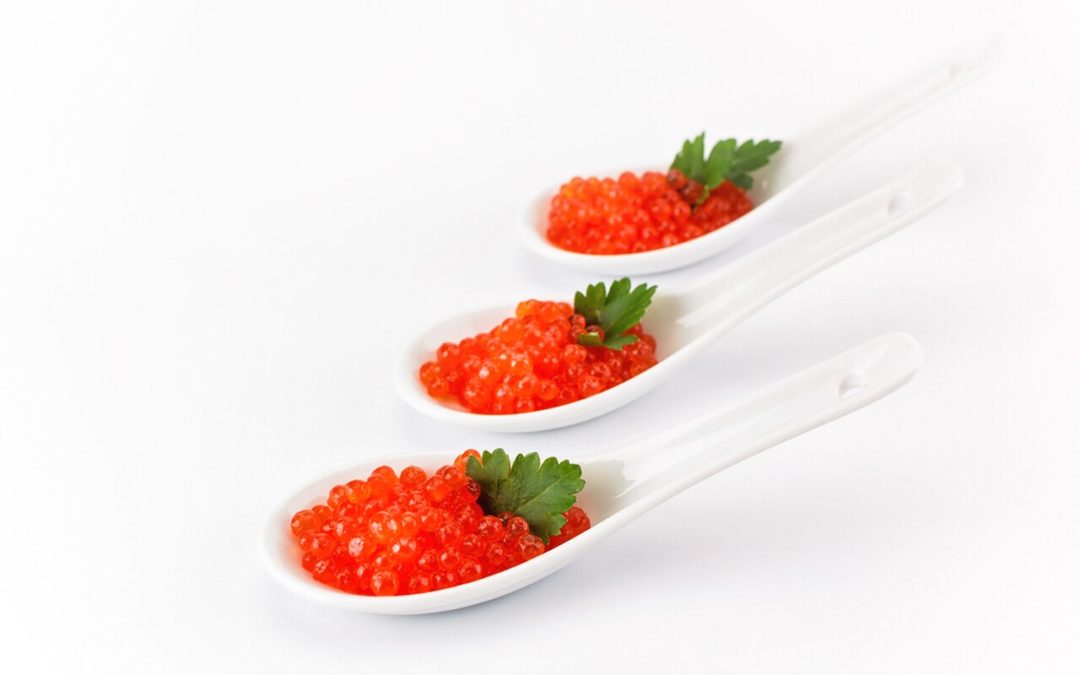
Hackleback vs Paddlefish Caviar
As demographics merge and desire for new taste experiences explode, it’s not surprising that the luxury food market in general and caviar in particular is trending. Along with this growing interest, there is an obvious shift in the caviar consumer base. According to annual sales and an ongoing Hackleback vs Paddlefish caviar dialogue; people are as interested today in these humble domestic varieties as the elite still are in the Beluga and Sevruga giants from the Caspian Seas. Frankly, this is not surprising since habitat loss, a decline in the most sought after sturgeon population and global bans have driven sale of these pricy fish eggs into a downward spiral.
As the caviar market continue to turn; people are experiencing the striking similarities in the appearance and flavor profiles of American Paddlefish and Hackleback caviars at extremely comfortable price points when compared to the elusive and expensive Caspian Sea Sturgeons.
And so it begins; the hackleback vs paddlefish caviar argument which is more often ignited by which caviar pairs best with the chef’s menu selections. Even so, the there are some significant differences between hackleback and paddlefish and the caviar they produce. These are primarily hinged on the variables of species, roe size, color and flavor profile.
Species of Hackleback vs Paddlefish
While Hackleback belongs to the Scaphirhynchus platorynchus sturgeon family; Paddlefish is a member of the Polyodontidae or basal Chondrostean ray-finned fish species. Although not a sturgeon, it is recognized as a cousin of the sturgeon species partly because like the ancient sturgeons, Paddlefish are also referred to as “primitive” with fossil records dating as far back as the late cretaceous period that substantiate this designation. And, while there are at least 27 Sturgeon species only six known Paddlefish genera existed of which four are already extinct.
The good news is that studies show advancements in technology relative to farming methodologies are designed to enhance rearing and propagation of these specimens. As such, these biotechnologies have already noticeably improved the reproduction capacity of both the Hackleback and Paddlefish populations as well as their survival rates.
Roe Size and Color
As the smallest of the sturgeon population, Hackleback caviar consists of small, black pearls that are often marketed as either Chattanooga Beluga, American Premium Black Caviar or simply Hackleback Caviar.
In comparison, the size of the Paddlefish produces fish eggs that are similar in appearance to Suvrega caviar pearls. They also range in color from light to a dark gray or shimmering golden brown hues.
Flavor Profile
When it comes to caviar, it all comes down to flavor. Whether you choose Hackleback caviar or Paddlefish caviar you are sure to enjoy the succulent and unique essence of either one.
American Paddlefish caviar is distinguished by a complex flavor profile that is at the same time earthy, silky and smooth with a subtle finish.
On the other hand, Hackleback caviar is often compared in flavor to the Caspian Sea Ossetra and of course; Suvrega caviar. It is known for its sweet, buttery flavor and a strong nutty finish. The shimmering beads of this caviar adds drama and decadence whether it is paired with the tartness of a crisp green apple or piled on toast points accompanied by crème fraiche.
You can experience the best imported and domestic caviar and a host of other luxury foods from around the world through House of Caviar and Fine Foods. We offer a wide variety of gourmet meats, vinegars, along with the finest Foie Gras, fresh or preserved truffles, and other specialty foods at our online store. Also, follow House of Caviar and Fine Foods on Facebook for delicious recipes and more ideas on ways to incorporate these delicacies into your lifestyle.
